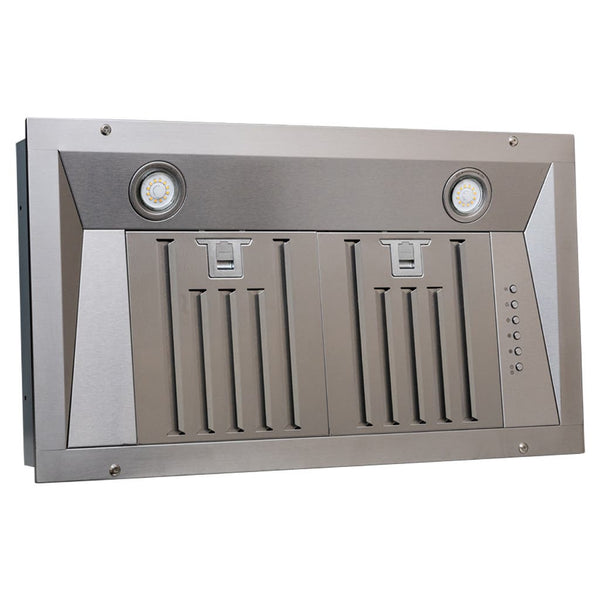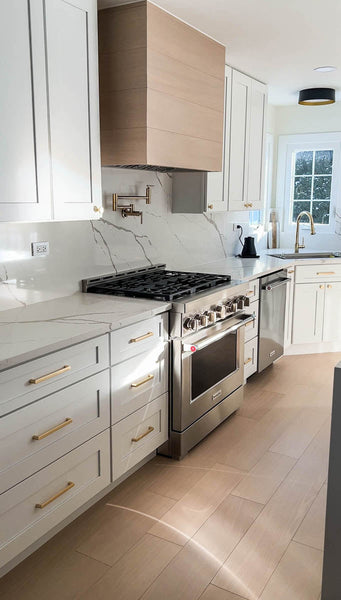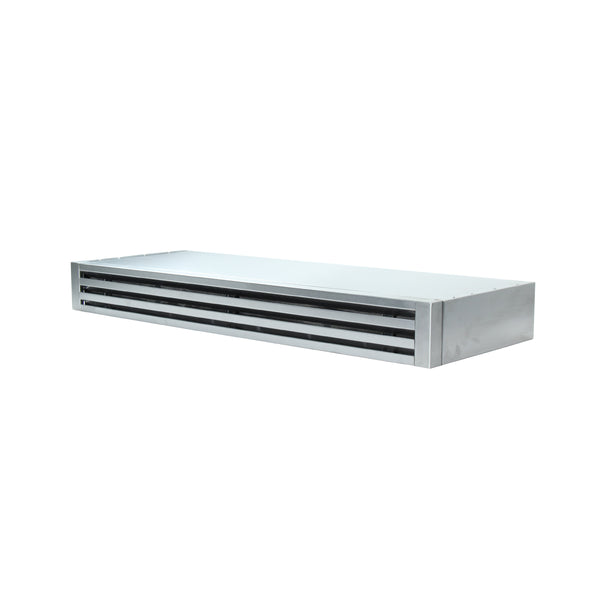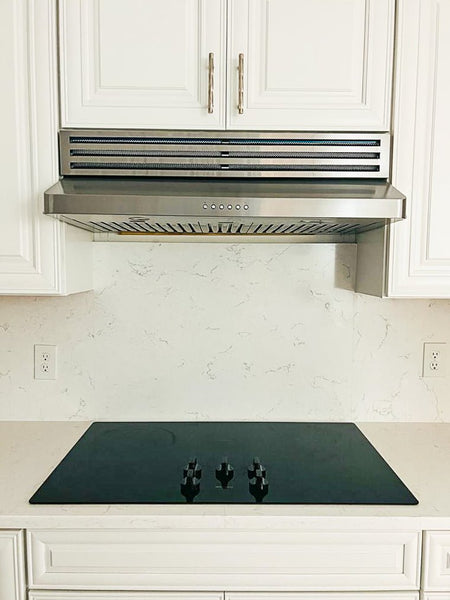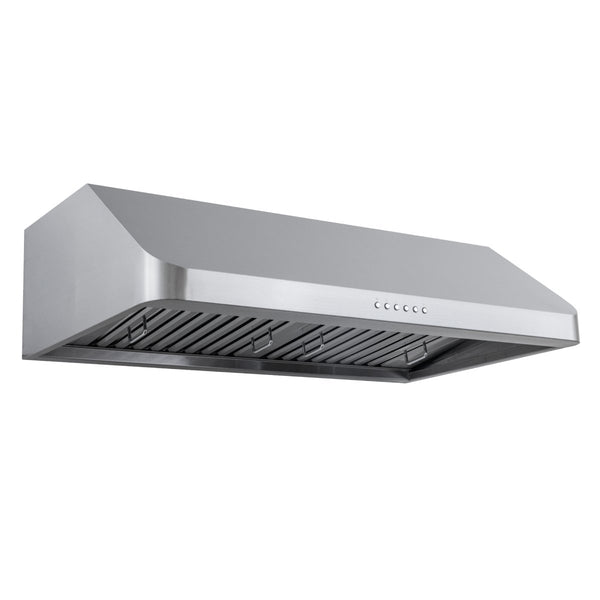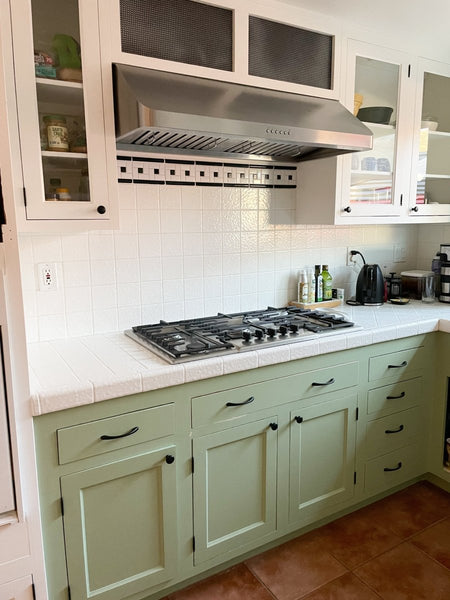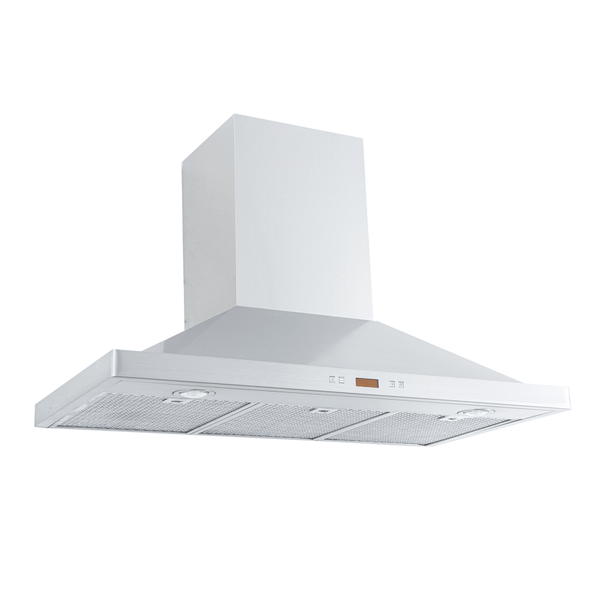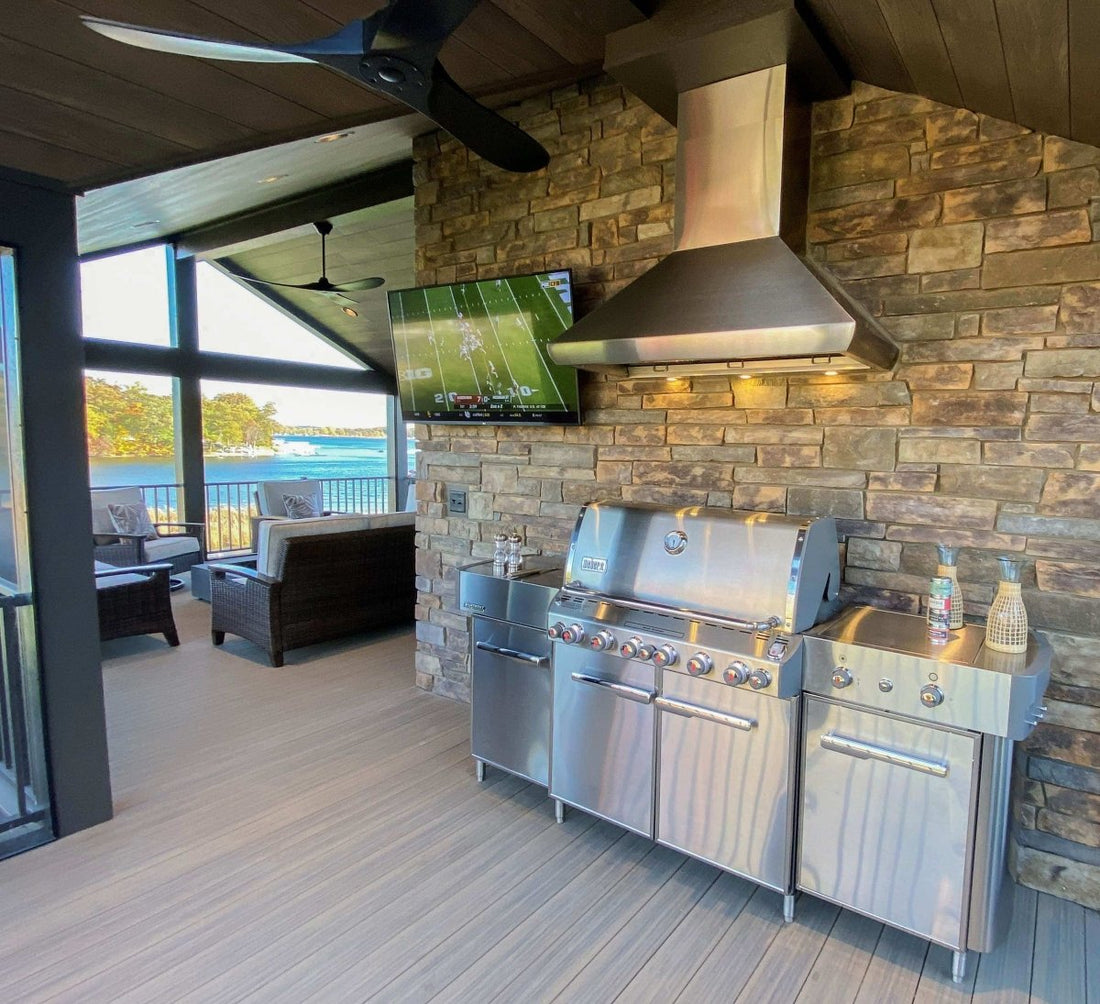Outdoor kitchens have become increasingly popular in recent years, as more homeowners seek to create functional and stylish spaces for cooking and entertaining. Whether you're planning to build a new outdoor kitchen or upgrade an existing one, there are certain features that are essential for creating a functional and enjoyable space.
In this article, we'll explore 10 essential features of a functional outdoor kitchen that will help you create the perfect space for cooking, dining, and entertaining. From grills and refrigerators to lighting and ventilation, we'll cover everything you need to know to create an outdoor kitchen that meets your needs and exceeds your expectations.
Whether you're a seasoned chef or just enjoy cooking and entertaining outdoors, a well-designed outdoor kitchen can be a game-changer. By incorporating the right features and elements, you can create a space that is both functional and stylish and that allows you to cook and entertain with ease. So, let's dive in and explore the essential features of a functional outdoor kitchen.
1 - Layout and Design
Work Triangle
The work triangle is a crucial aspect of any kitchen layout, including outdoor kitchens. The work triangle refers to the path between the three main work zones in the kitchen: the sink, the stove or grill, and the refrigerator. The work triangle should be designed in such a way that it allows for easy movement between these three zones, reducing the amount of time and effort required to prepare and cook food.
When designing an outdoor kitchen, it is important to keep the work triangle in mind. The grill or stove should be placed in close proximity to the sink and refrigerator, with enough counter space in between to allow for food preparation. This will ensure that the cook can move easily between these zones without having to walk too far or cross over other work areas.
Zones
Another important aspect of outdoor kitchen design is the creation of distinct zones for different activities. These zones should be arranged in a logical and functional way, with each zone serving a specific purpose. The four main zones in an outdoor kitchen are the prep zone, the cooking zone, the plating and serving zone, and the entertainment zone.
- The prep zone should be located near the sink and refrigerator and should include ample counter space for food preparation, cutting boards, and utensils.
- The cooking zone should be located near the grill or stove and should include a cooking surface, a hood or ventilation system, and storage for cooking utensils and supplies.
- The plating and serving zone should be located near the cooking zone and should include a countertop or table for plating and serving food, as well as storage for dishes, glasses, and utensils.
- The entertainment zone should be located away from the cooking and prep zones and should include comfortable seating, a table or bar, and possibly a television or sound system for entertainment.
Stations
In addition to the four main zones, it is also important to create functional stations within each zone. These stations should be designed to maximize efficiency and convenience for the cook and guests. Some common stations include:
- A beverage station with a sink, refrigerator, and ice maker for easy access to drinks.
- A grilling station with a built-in grill, side burners, and storage for grilling utensils and supplies.
- A pizza station with a pizza oven, prep space, and storage for pizza-making supplies.
- A bar station with a sink, refrigerator, and storage for glasses and bar supplies.
By creating distinct zones and stations within the outdoor kitchen, the cook can easily move between tasks and prepare food more efficiently, while guests can enjoy the outdoor space and socialize without getting in the way of the cooking process.
2 - Appliances
Grill and/or Smoker
One of the most important appliances in an outdoor kitchen is the grill and/or smoker. These appliances are essential for cooking up delicious meals for family and friends. When choosing a grill and/or smoker, it's important to consider the size, fuel source, and cooking surface. Gas grills are a popular choice because they are easy to use and clean, while charcoal grills provide a more authentic flavor. Smokers are perfect for slow-cooking meats and infusing them with smoky flavor.
Refrigerator and/or Ice Maker
Another important appliance for an outdoor kitchen is a refrigerator and/or ice maker. These appliances are essential for keeping food and drinks cold and refreshing on hot summer days. When choosing a refrigerator and/or ice maker, it's important to consider the size and capacity. A built-in refrigerator and/or ice maker can be a great choice because it maximizes space and provides easy access to cold drinks and ice.
Sink and/or Dishwasher
A sink and/or dishwasher can be a great addition to an outdoor kitchen. These appliances make it easy to clean up after cooking and entertaining. When choosing a sink and/or dishwasher, it's important to consider the size and placement. A large sink can be useful for washing large pots and pans, while a small sink can be used for hand-washing and rinsing. A dishwasher can be a great choice for those who want to minimize clean-up time and maximize time spent enjoying their outdoor space.
3 - Storage
Cabinets and Shelves
Having ample storage is crucial for keeping your outdoor kitchen organized and functional. Cabinets and shelves provide a convenient place to store utensils, cookware, and other essentials. Stainless steel is a popular material for outdoor cabinetry, as it is durable and weather-resistant. Consider the size and layout of your outdoor kitchen when choosing cabinets and shelves, as they should fit seamlessly into the design.
When selecting cabinets and shelves, think about what you need to store and how often you will be accessing those items. Consider adding pull-out drawers or shelves to make it easier to reach items in the back. You can also install open shelving to display decorative items or frequently used cookware.
Countertops and Prep Space
Countertops and prep space are essential for any outdoor kitchen. You'll need a place to prep food, assemble dishes, and set down utensils and ingredients. Choose a durable material, such as granite or concrete, that can withstand the elements and frequent use.
Consider the size and shape of your outdoor kitchen when choosing countertops and prep space. You'll want enough space to work comfortably, but you also don't want to take up too much room. If you plan to have multiple cooks in the kitchen, consider adding a secondary prep area or a separate countertop for additional workspace.
Incorporating storage into your outdoor kitchen design is essential for keeping your space organized and functional. Cabinets and shelves provide a convenient place to store utensils, cookware, and other essentials, while countertops and prep space offer ample room for food preparation and assembly.
4 - Lighting and Electrical
Task Lighting
Task lighting is essential for any outdoor kitchen. It provides focused light that illuminates specific areas where food preparation or cooking takes place. LED lights are an excellent choice for task lighting as they are energy-efficient and long-lasting. Install LED lights under cabinets or overhead to provide ample task lighting.
Ambient Lighting
Ambient lighting sets the mood and creates a relaxing atmosphere in your outdoor kitchen. It can be used to highlight architectural features, such as a stone backsplash or a water feature. String lights, lanterns, and sconces are popular choices for ambient lighting. Choose warm, soft light bulbs to create a cozy and inviting atmosphere.
Electrical Outlets and Wiring
When designing your outdoor kitchen, consider the number and location of electrical outlets. You'll need outlets for appliances such as blenders, mixers, and grills. Make sure to install GFCI (ground fault circuit interrupter) outlets to protect against electrical shock. Additionally, ensure that the wiring is up to code and can handle the electrical load of your appliances.
It's best to consult with a licensed electrician to ensure that your outdoor kitchen is safe and up to code. They can advise you on the best placement of outlets and wiring to meet your needs.
5 - Seating and Dining
When designing an outdoor kitchen, it's important to consider the seating and dining area. This area is where family and friends will gather to enjoy meals and socialize. Here are some important factors to consider when designing the seating and dining area:
Bar and/or Counter Seating
Adding a bar or counter seating area to your outdoor kitchen can provide a casual and comfortable atmosphere for guests to relax and enjoy drinks or snacks. Bar and counter seating can also be a great way to maximize space in a smaller outdoor kitchen. When choosing bar and counter seating, consider the height and material of the stools or chairs. Stools or chairs made of weather-resistant materials are ideal for outdoor use.
Table and Chairs
A dining table and chairs can provide a more formal and traditional seating option for outdoor kitchens. When choosing a dining table and chairs, consider the size and shape of the table, as well as the material of the chairs. Tables made of materials such as wood or metal can provide a durable and stylish option for outdoor use. Chairs with comfortable cushions can also provide a cozy and inviting atmosphere for guests.
Another important factor to consider when choosing seating and dining options is the layout of the outdoor kitchen. Consider the placement of the grill, sink, and other appliances to ensure that the seating and dining area is easily accessible and functional. Additionally, consider the amount of shade and lighting in the area to provide a comfortable and enjoyable experience for guests.
6 - Entertainment
Outdoor Sound System
An outdoor sound system is a great addition to any outdoor kitchen. It allows you to listen to music or podcasts while cooking, dining, or entertaining guests. When choosing an outdoor sound system, it's important to consider the size of your outdoor space and the quality of the sound system. Look for a sound system that is weather-resistant and has good sound quality.
There are many different types of outdoor sound systems to choose from, including wireless systems, Bluetooth speakers, and built-in speakers. Wireless systems are easy to set up and can be moved around as needed. Bluetooth speakers are portable and can be used with a smartphone or tablet. Built-in speakers are more permanent and can be integrated into your outdoor kitchen design.
Television
A television is another great entertainment option for your outdoor kitchen. It allows you to watch your favorite shows or sports games while enjoying the outdoors. When choosing a television for your outdoor kitchen, it's important to choose a model that is weather-resistant and has good picture quality.
There are many different types of outdoor televisions to choose from, including wall-mounted models, portable models, and built-in models. Wall-mounted models are a great option if you have limited space in your outdoor kitchen.
Portable models are easy to move around and can be used in different areas of your outdoor space. Built-in models are more permanent and can be integrated into your outdoor kitchen design.
7 - Location
When it comes to designing an outdoor kitchen, location is key. Here are a few factors to consider:
Proximity to Indoor Kitchen
One important factor to consider when choosing the location of your outdoor kitchen is its proximity to your indoor kitchen. This will make it easier to transport food and supplies between the two spaces. Ideally, your outdoor kitchen should be located within a few steps of your indoor kitchen.
Shelter and Shade
Another important consideration when choosing the location of your outdoor kitchen is shelter and shade. You'll want to make sure that your outdoor kitchen is protected from the elements, especially if you live in an area with harsh weather conditions. Consider adding a pergola or awning to provide shade and shelter from the sun and rain.
Additionally, you'll want to make sure that your outdoor kitchen is located in an area that is well-ventilated. This will help to prevent smoke and fumes from building up and becoming a nuisance to you and your guests.
Overall, choosing the right location for your outdoor kitchen is essential to creating a functional and enjoyable outdoor living space. By considering factors such as proximity to your indoor kitchen and shelter and shade, you can create an outdoor kitchen that is both practical and stylish.
8 - Maintenance and Cleaning
Maintaining and cleaning an outdoor kitchen is essential to keep it functioning properly and looking great. Here are some tips on how to keep your outdoor kitchen clean and well-maintained.
Materials and Finishes
The materials and finishes used in your outdoor kitchen can affect how easy it is to clean and maintain. Stainless steel is a popular choice as it is durable and easy to clean. However, it can show fingerprints and smudges easily.
Powder-coated finishes are also durable and come in a variety of colors, but can scratch easily. Stone and tile are also popular choices but can be more difficult to clean and maintain.
To keep your outdoor kitchen looking its best, clean it regularly with mild soap and water. Avoid using abrasive cleaners or steel wool as they can scratch the surface. For stainless steel, use a stainless steel cleaner to remove any fingerprints or smudges.
Drainage and Cleaning
Proper drainage is essential for keeping your outdoor kitchen clean and preventing water damage. Make sure your outdoor kitchen has a drainage system in place to prevent water from pooling on the surface. Clean out any debris or food scraps from the drain regularly to prevent clogs.
When cleaning your outdoor kitchen, make sure to clean all surfaces including countertops, appliances, and storage areas. Use a disinfectant cleaner to kill any bacteria or germs. Don't forget to clean the grill grates and burners regularly to prevent buildup of grease and food particles.
Overall, regular maintenance and cleaning is key to keeping your outdoor kitchen functional and looking great. By following these tips, you can ensure that your outdoor kitchen will be a source of enjoyment for years to come.
Conclusion
Creating an outdoor kitchen is an investment in your home and your lifestyle. By incorporating the essential features discussed in this article, you can create a functional and enjoyable space for cooking, dining, and entertaining.
Remember, the key to a successful outdoor kitchen is to prioritize functionality and convenience. You want to make sure that everything you need is within reach, and that the space is designed to facilitate an efficient workflow.
Whether you are a seasoned chef or a weekend griller, having a well-equipped outdoor kitchen can enhance your cooking experience and bring your family and friends together. By including features such as a grill, sink, refrigerator, storage, and workspaces, you can create a versatile and functional space that will serve you for years to come.
So, take the time to plan your outdoor kitchen carefully and consider all of the essential features that you will need to make it functional and enjoyable. With a little bit of creativity and some careful planning, you can create an outdoor kitchen that will become the heart of your home and the envy of your neighbors.
